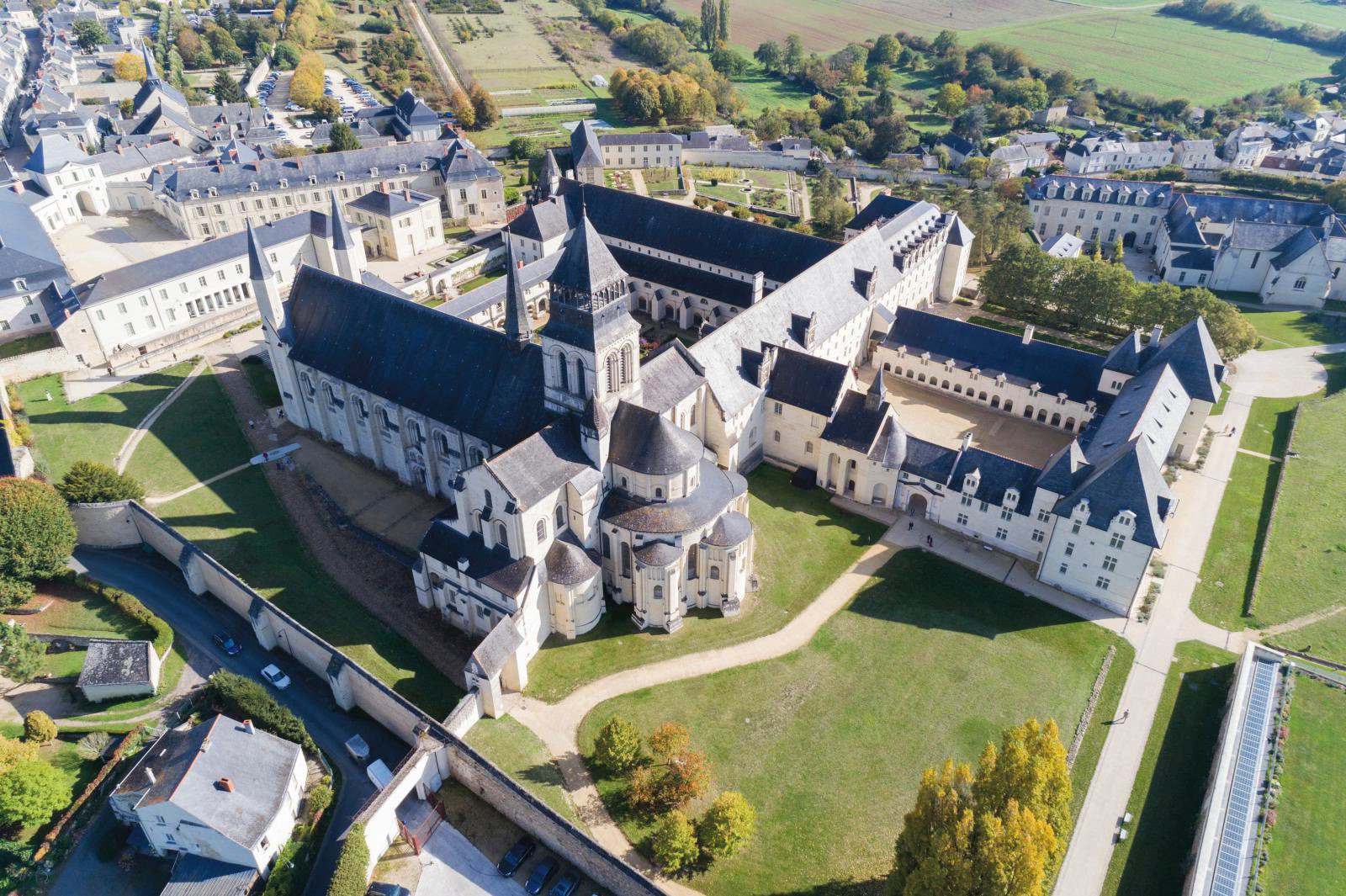
Fontevraud Abbey is a stunning historical site located in the Loire Valley of France. Founded in 1101, it served as a monastery for both monks and nuns, a rare occurrence in medieval times. This abbey has witnessed centuries of history, from the reign of the Plantagenets to the French Revolution. Today, it stands as a testament to architectural brilliance and spiritual significance. Visitors can explore its grand halls, intricate carvings, and serene gardens. Whether you're a history buff or just curious, Fontevraud Abbey offers a glimpse into a bygone era. Ready to learn more? Here are 23 fascinating facts about this remarkable place.
Key Takeaways:
- Fontevraud Abbey, a medieval marvel, housed both monks and nuns and is the final resting place of Plantagenet royals. It's now a UNESCO World Heritage Site and a cultural hub.
- The abbey, once a prison, is now a cultural center and luxury hotel. It offers educational programs and showcases stunning Romanesque architecture and artistic wonders.
Fontevraud Abbey: A Historical Marvel
Fontevraud Abbey, located in the Loire Valley of France, is a site rich with history and architectural beauty. This medieval abbey has witnessed centuries of events and transformations. Let's dive into some fascinating facts about this remarkable place.
-
Founded in 1101: Fontevraud Abbey was established by Robert of Arbrissel, a wandering preacher. He envisioned a monastic community where men and women could live together under the same rule.
-
Dual Monastic Community: Unique for its time, the abbey housed both monks and nuns. They lived in separate quarters but followed the same religious practices.
-
Royal Burial Site: The abbey is the final resting place of several Plantagenet royals, including King Henry II of England, his wife Eleanor of Aquitaine, and their son Richard the Lionheart.
-
Largest Abbey in Europe: Fontevraud is one of the largest surviving monastic complexes from the Middle Ages in Europe, covering over 34 acres.
-
Romanesque Architecture: The abbey showcases stunning Romanesque architecture, characterized by its rounded arches, massive walls, and decorative arcading.
The Abbey's Role Through the Ages
Over the centuries, Fontevraud Abbey has served various purposes, adapting to the changing times. Here are some intriguing facts about its evolving roles.
-
Napoleonic Prison: In 1804, Napoleon Bonaparte converted the abbey into a prison. It remained a penitentiary until 1963.
-
Harsh Conditions: As a prison, the abbey was notorious for its harsh conditions. Inmates were subjected to overcrowding, poor sanitation, and forced labor.
-
Restoration Efforts: After the prison closed, extensive restoration efforts began to preserve the abbey's historical and architectural significance.
-
UNESCO World Heritage Site: In 2000, the abbey was designated a UNESCO World Heritage Site as part of the Loire Valley's cultural landscape.
-
Cultural Hub: Today, Fontevraud Abbey serves as a cultural center, hosting art exhibitions, concerts, and other events.
Architectural and Artistic Highlights
Fontevraud Abbey is not just a historical site; it is also a treasure trove of architectural and artistic wonders. Here are some highlights.
-
The Abbey Church: The centerpiece of the complex, the Abbey Church, features a stunning nave and intricate carvings.
-
Cloisters: The cloisters, with their serene walkways and beautiful gardens, offer a glimpse into monastic life.
-
Chapter House: The Chapter House is adorned with frescoes depicting biblical scenes, showcasing medieval artistry.
-
Kitchen: The abbey's kitchen is an architectural marvel with its unique octagonal shape and massive chimneys.
-
Dormitories: The dormitories, where monks and nuns slept, are simple yet elegant, reflecting the austere monastic lifestyle.
Fontevraud Abbey in Popular Culture
Fontevraud Abbey has also made its mark in popular culture, appearing in various forms of media and inspiring countless stories.
-
Literary References: The abbey has been mentioned in numerous literary works, including those by Victor Hugo and Honoré de Balzac.
-
Film Location: Its picturesque setting has made it a popular filming location for movies and TV shows.
-
Artistic Inspiration: Many artists have drawn inspiration from the abbey's architecture and history, creating paintings, sculptures, and other artworks.
-
Music Videos: Some music videos have been shot at the abbey, taking advantage of its dramatic and historical backdrop.
-
Video Games: Fontevraud Abbey has even appeared in video games, allowing players to explore its medieval splendor virtually.
Modern-Day Fontevraud Abbey
Today, Fontevraud Abbey continues to captivate visitors with its rich history and cultural significance. Here are some modern-day facts about this iconic site.
-
Hotel: Part of the abbey has been converted into a luxury hotel, offering guests a unique experience of staying in a historical monument.
-
Sustainable Practices: The abbey is committed to sustainability, implementing eco-friendly practices in its operations.
-
Educational Programs: Fontevraud Abbey offers educational programs and workshops, allowing visitors to learn about its history, architecture, and cultural impact.
Fontevraud Abbey: A Timeless Marvel
Fontevraud Abbey stands as a testament to history's rich tapestry. From its founding by Robert of Arbrissel in 1101 to housing the tombs of Plantagenet royalty, this abbey has seen centuries of change. Its transformation from a religious site to a prison, and now a cultural center, showcases its resilience. The abbey's architecture, blending Romanesque and Gothic styles, captivates visitors. Its role in the lives of Eleanor of Aquitaine and Richard the Lionheart adds to its allure. Fontevraud's preservation efforts ensure future generations can appreciate its beauty and significance. Whether you're a history buff or an architecture enthusiast, this abbey offers a glimpse into the past. Visiting Fontevraud Abbey is like stepping back in time, where every stone tells a story. Its enduring legacy continues to inspire and educate, making it a must-see destination.
Frequently Asked Questions
Was this page helpful?
Our commitment to delivering trustworthy and engaging content is at the heart of what we do. Each fact on our site is contributed by real users like you, bringing a wealth of diverse insights and information. To ensure the highest standards of accuracy and reliability, our dedicated editors meticulously review each submission. This process guarantees that the facts we share are not only fascinating but also credible. Trust in our commitment to quality and authenticity as you explore and learn with us.


